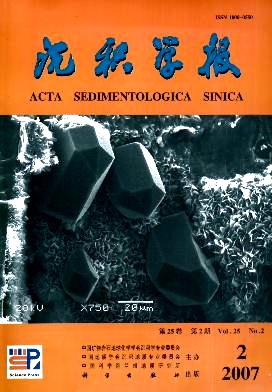The Roles of Inorganic Minerals on the Oil and Gas Generating Processes
- Received Date: 1900-01-01
- Rev Recd Date: 1900-01-01
- Publish Date: 2007-04-10
-
Key words:
- simulation /
- coal /
- inorganic mineral /
- catalysis /
- restrain
Abstract: A coal sample was separately heated with kaolinite, CaCO3, Fe3O4, FeS , S and without any minerals at 250℃ to 600℃ in closed hydrous pyrolysis systems for 72 h. The results show that inorganic minerals have considerable affects on oil and gas generating processes. When coal was heated with kaolinite, the coal sample has higher bitumen "A" productivity than that of without kaolin at the highest bitumen "A" producing temperature, and this highest bitumen "A" producing temperature was moved from 400℃ (pure coal ) to 350℃ when kaolin was involved. The coal sample get its highest bitumen “A” producing at 400℃ when it was heated with and without CaCO3, but when coal was heated with CaCO3, it produce more bitumen “A” than that of without CaCO3 at 400℃. More bitumen “A” was produced at 250℃ and 300℃ and less of bitumen “A” was produced at 400℃ when the coal was heated with Fe3O4 than that of without Fe3O4. Similarly to kaolinite, Fe3O4 also make the coal moving its highest bitumen “A” producing temperature from 400℃(pure coal ) to 350℃.When coal was heated with FeS, the coal sample produce more bitumen “A” at all heating temperatures than that of without FeS, and the highest bitumen “A” producing temperature was also moved to 350℃(coal+FeS) instead of 400℃ (pure coal ).The coal produced less bitumen “A” at 350℃ and 400℃ and produced much more bitumen “A” 450℃ when it was heated with element S than that of without S. All the above observations indicate that inorganic minerals have both catalysis or delay affects on the oil generating process when the coal sample was heated with minerals.
The coal has its highest gas productivity at 550℃ when it was heated with and without minerals. Comparatively, coal produced more gas when it was separately heated with kaolinite, CaCO3 and S and produced relatively less gas products when it was separately heated with Fe3O4 and FeS than that of without any minerals at high temperatures (from 400℃ to 600℃) .
The laboratory studies previously have shown that the activation energies for thermal cracking of macr-organic molecules to light hydrocarbons are much higher than that in nature. These observations have led geologists believe that there must have some catalysts in nature which could lower the activation energies for oil and gas generating reactions and make oil and gas generating reactions happened or make them accelerated that not occurred or occurred slowly because of higher activation energies.
This study indicates that thermal reaction is a very important factor during the oil and gas generating processes, but mineral catalysis or delay affects also play important roles in those processes. So, we should pay more attention on mineral catalysis/delay affects as well as thermal reactions on oil and gas exploration.
| Citation: | ZU Xiaojing. The Roles of Inorganic Minerals on the Oil and Gas Generating Processes[J]. Acta Sedimentologica Sinica, 2007, 25(2): 298-306. |






 DownLoad:
DownLoad: